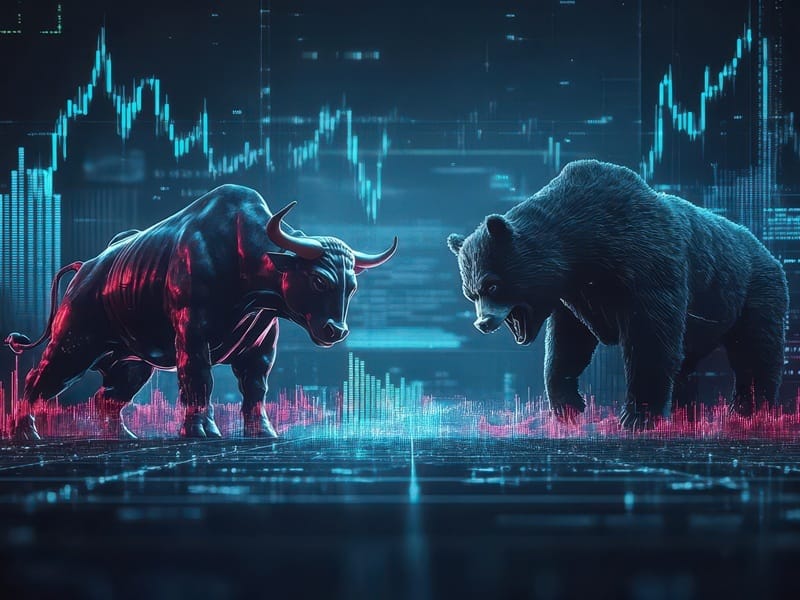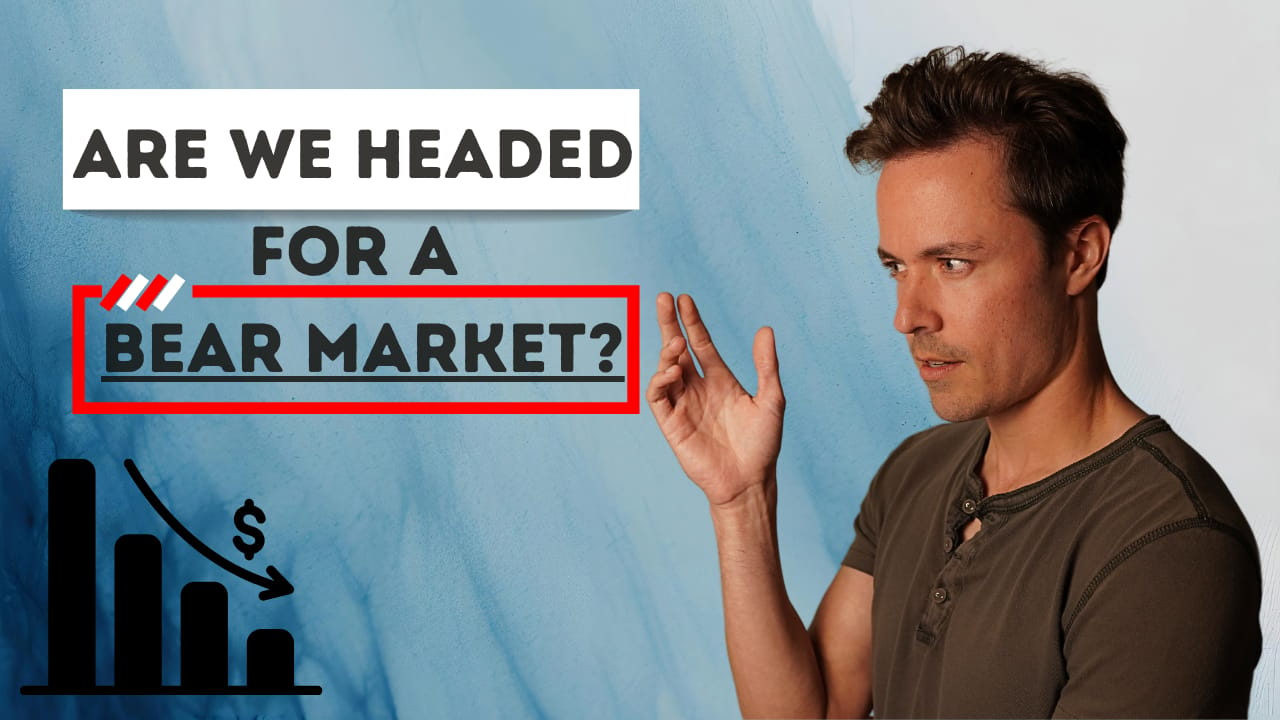- The Wealth Expedition
- Posts
- Is A Bear Market Developing?
Is A Bear Market Developing?
Panic on Wall Street! What does this mean for future markets? And how should investors respond?

Our weekly newsletter features the following sections:
News
Paradigm Shift
Financial Tool
Here’s How I Can Help
First time reading? Subscribe for weekly content here.

There’s a reason Morning Brew is the gold standard of business news—it’s the easiest and most enjoyable way to stay in the loop on all the headlines impacting your world.
Tech, finance, sales, marketing, and everything in between—we’ve got it all. Just the stuff that matters, served up in a fast, fun read.
Look—over 4 million professionals start their day with Morning Brew’s daily newsletter, and it only takes 5 minutes to read. Sign up for free and see for yourself!

"If you can keep your head when all about you are losing theirs...
If you can wait and not be tired by waiting...
If you can think — and not make thoughts your aim...
If you can trust yourself when all men doubt you...
Yours is the Earth and everything that's in it."
-Rudyard Kipling (1895), quoted by Warren Buffett in 2017
The third episode of my podcast is now on YouTube! Disclaimer: I filmed this literally a few HOURS before the Executive Order was signed, which definitely elevated the chance of hitting bear market territory beyond what I discuss here. I’ll dive deeper on recent events in next week’s video. For now, enjoy! |

NEWS
What Happened Last Week
President Trump signed an Executive Order declaring a national emergency regarding unfair global trading practices that have arbitrarily decreased the US’ ability to produce domestically.
Reciprocal tariffs (ad valorum duties) were announced starting at 10% and increasing in the near future to specific rates customized to certain nations, depending on the tariff and non-tariff barriers each places on trade with the U.S.
Each tariff will remain in place until the respective country meets the demands for fair trade practices, which are listed extensively in the Executive Order.
The US trade deficit remained elevated in February as companies accelerated imports ahead of tariffs, importing in anticipation of rising prices. This deficit is likely to decline significantly in Q2, now that tariffs are largely in effect.
Private sector disposable income (income after taxes) rose 3.2% from a year ago. Compare this with inflation in the Consumer Price Index (CPI) of 2.8% since a year ago.
The U.S. economy added 228,000 jobs in March, far exceeding what was expected at 135,000.
Unemployment ticked up from 4.1% to 4.2%, still in the normal range of what is considered full employment.
How I See It
We’re watching America wrestle with a sort of economic paradox.
Any economist will tell you that global trade makes everyone better off. That’s because different nations have different resources and different strengths, whether it’s due to culture, resources or other characteristics of geography.
Free trade saves everyone time, and therefore money, because of this efficient division of labor.
Economists know this. President Trump knows this.
But economics is not the only subject that matters in the interest of a country. Of course, so does national security.
Let’s bring this around to a personal finance example for comparison.
Any good financial advisor is going to encourage an emergency fund. That is typically a savings account that holds enough to pay for 3-6 months of living expenses in case of a job layoff or other emergency.
Same goes for emergency preparedness on a very physical level. Emergency preparedness involves having a ready supply of necessary items: mainly medicine, shelter, food and water in case worst comes to worst.
Here’s the question.
In our day-to-day lives, does an emergency fund in a savings account earn the highest return on our money? No.
Could we spend our money on something more useful today than extra water and food in preparation for an emergency? Yes.
But that’s not the way to have sustainable well-being. It only lasts as long as it lasts…until there’s an actual emergency. Only then, when it’s too late, do we wish we had made the investment to prepare.
While I’m not privy to every detail that the Trump Administration is dealing with in regard to these decisions, and I don’t know what they will mean for the immediate future, it is quite clear why they are being implemented.
Russia invaded Ukraine, the deadliest European conflict since WWII. Hamas and Israel have gone to war. US relations with China have soured since the days COVID unnecessarily wreaked havoc on the world. And until now, there have been whispers of de-globalization that reduces trading relations largely into two or more trading BLOCs among countries who share interests, belief systems and values.
President Trump’s Administration believes that the US absolutely must be independently able to produce military equipment and sufficient food supplies to protect and sustain the American people without requiring dependence on foreign nations.
Ukraine has offered a recent example of a nation that cannot manufacture its own military equipment with sufficient speed when left to itself. America does not want to find itself in such an emergency situation, especially as global tensions with Russia, China and the Middle East have escalated in recent years.
The relative success Russia has had against Ukraine is a stark wake-up call to what remains possible in the present day.
The COVID crisis also offered an example of how too much reliance on foreign countries can affect the US negatively in times of emergency.
In short, managing global trade is a balance between efficiency and security.
There’s actually nothing wrong with a trade deficit. Trade deficits happen. Money flows out of the US. But US dollars get deposited in foreign banks, and those banks buy (guess what) US Treasuries to earn interest on those deposits until the time they’re needed again.
So the money flows back into the US government. No harm done.
But it’s trade imbalances to the extreme, due to unfair practices, that do create a problem. It’s like a muscle that goes unused. Too much imbalance weakens certain sectors of the US economy to such a degree that we lose our preparedness for a global or domestic emergency.
And that’s the reason for this National Emergency recently declared by the President of the United States.
Whether it successfully does the job it’s intended to do or not is up for speculation. No one knows or can know at this point. But the logic behind why it’s being done is not about economic efficiency. It’s about national security.
In the end, this policy shift isn’t about getting the highest return—it’s about being prepared. Like an emergency fund, it may not be efficient in the short term, but when a crisis hits, national sustainability matters more than short-term performance.

PARADIGM SHIFT
Is A Bear Market Developing?
It’s no secret that US markets were rocked this past week by the reciprocal tariffs.
The S&P 500 ended the week down -9.08% from the previous Friday. On Thursday, it experienced its biggest single day drop since 2020.
Bear markets are technically defined by a 20% drop or more from recent market highs. And bear markets are especially painful because they generally last a good deal longer than simple pullbacks (-5% to -10%) and corrections (-10% to -20%).
For long-term investors (10+ years), bear markets don’t matter as much as they do for short- or intermediate-term investors (0-5 years or 5-10 years respectively).
Here’s the thing. It’s MORE expensive for a long-term investor to attempt to time a bear market and be wrong, than it is for a short-term investor to do the same thing and be wrong.
That’s because the long-term investor, when he or she is wrong, not only misses out on upside but also the future value of that missed upside compounded over time.
Chances of hitting bear market territory are uncomfortably high as of today. We’re only a few percentage points away now, and technically it could be called any day.
But I want to be a bit more nuanced.
I don’t believe we’re headed for a long, drawn-out bear market like 2001 or 2008. If we hit a bear market in the days ahead, I expect it to be more like the 2020 or 2022 bear markets.
The average bear market lasts about 10 months before hitting bottom and turning around. If this develops into a bear market, I don’t expect it will be longer than the average.
And right now, it appears we are nearing the height of uncertainty in global trade. While things could become even more uncertain, the likelihood is that companies and governments begin the adjustment, negotiation, restructuring and innovation period that reduces uncertainty as the year progresses.
However, it’s likely we still see heightened day-to-day movement over the next few weeks. The downward trend could easily continue for weeks and even months.
On January 31, I adjusted my own personal portfolio to protect against a good portion of the downside, in anticipation of a market correction which developed very soon afterward. While no one gets it correct all of the time, that call was pretty spot on. Month-to-date, I lost 1.94% while the S&P 500 lost 9.58%.
The hedge I placed was largely in response to the same reasons that led me to predict a coming 2025 market correction on December 9, 2024.
And that’s the sort of risk management that I teach in my courses and upcoming membership program which I hope to share with you as time progresses.


FINANCIAL TOOL
The Best Trading Days
It’s natural to face the question of whether or not to go defensive in the midst of extreme volatility in markets.
When we see the S&P 500 moving 4%, 5% or even 6% to the downside in a single day, that can be very uncomfortable.
The question of what should be done in this instance differs with regard to each investor, because we’re playing a game of statistics with the market. And statistics mean something different depending on the situation, goals and time horizon.
Statistics don’t tell us what will happen. They guide us to a course of action with the highest likelihood for success at goal achievement over our time horizon.
A 50%+ chance of a bear market is risky for someone who is a short-term investor, especially if stocks are involved in a portion of their portfolio (hopefully not all of it!). But it’s less risky for a long-term investor looking at 10+ years of no withdrawals, or less than 5% annual withdrawals, planned from their portfolio.
The risk for a short-term investor is higher in riding through a potential bear market.
The risk for a long-term investor is higher in missing out on potential upside if a bear market doesn’t develop.
Why?
Because statistically, the BEST TRADING DAYS usually happen right alongside the worst trading days.
According to The Motley Fool, “over the last 20 years, from January 1, 2004 to December 29, 2023, six of the seven best days occurred after the worst days and seven of the best 10 days fell within two weeks of the 10 worst days within that two-decade period.”
So during the short period of time when we see markets dropping multiple percentage points, we’re also likely to see days when markets rise multiple percentage points.
In periods of high volatility, we could easily see 10% downside OR 10% upside in a very short period of time.
If we miss that 10% upside, that’s too bad for a short-term investor, but it can be devastating for a long-term investor.
That’s because the long-term investor has to also calculate the opportunity cost of missed exponential returns over their time horizon.
Missing those best days can be an astronomical cost to long-term investors, as Fidelity illustrates clearly in this hypothetical example. For long-term investors, better to ride through a bear market than to miss upside in a bull market.
Bear markets historically are significantly shorter in duration and experience less overall price change than bull markets.
So what can we do instead of timing the market? Well, there are rare instances in which timing the market might make sense. But having a proper risk management strategy that is ongoing, and set up from the beginning, is the most impactful and crucial key to long-term success.
And it helps you sleep at night, no matter what may happen in the stock market from day to day.

HERE’S HOW I CAN HELP
Launch Your Personal Wealth Expedition!
Ready to take control of your financial destiny?
Here are the two foundational courses which will set you on course to radically transform the way you live and work.

Budget, Build, Bridge: The Roadmap to Financial Independence
This course will lead you step-by-step toward developing your escape plan into a life of comprehensive wealth: time, flexibility, purpose and money.
Each lesson builds upon the last, covering these main topics:
Master high-impact budgeting techniques to create a surplus today.
Develop a plan to become debt-free in record time.
Raise your salary this year.
Use tax strategy to fast-track your goals.
Bridge your way to entrepreneurship.

Advanced Investing for Financial Freedom
Whether you're new to investing or a seasoned expert, this course is designed to make anyone a master of what I believe to be the most important investing concepts.
Here's what you'll learn in this course.
The foundational concepts for analyzing the risk and performance of mutual funds and ETFs.
How your goals affect the allocation of your investment portfolio.
How to fine tune the risk factors in your portfolio to weight the odds of success in your favor.
How to identify stages of the market cycle and build your portfolio around it.
How, when and why to hedge against downside risk.
How this all ties together as one comprehensive wealth expedition from ground zero to financial independence.
With investing, it often takes an understanding of just a handful of concepts to make all the difference in your ability to make tremendous wealth over time.
My goal with this course is to offer you what I see as the most important concepts to successful investing, setting you on course to achieve your dream life well in advance of retirement age using simple but powerful habits of finance.

How did you like today's newsletter?I'm always looking for ways to offer greater value to fellow explorers. Your feedback helps set the direction for future content! |

I’d love to hear from you. Let me know what you’d like to see in upcoming newsletters, articles, or a digital course at Contact Us - The Wealth Expedition.



